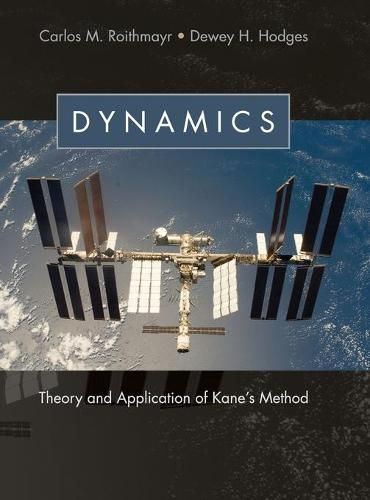Readings Newsletter
Become a Readings Member to make your shopping experience even easier.
Sign in or sign up for free!
You’re not far away from qualifying for FREE standard shipping within Australia
You’ve qualified for FREE standard shipping within Australia
The cart is loading…






This book is ideal for teaching students in engineering or physics the skills necessary to analyze motions of complex mechanical systems such as spacecraft, robotic manipulators, and articulated scientific instruments. Kane’s method, which emerged recently, reduces the labor needed to derive equations of motion and leads to equations that are simpler and more readily solved by computer, in comparison to earlier, classical approaches. Moreover, the method is highly systematic and thus easy to teach. This book is a revision of Dynamics: Theory and Applications (1985), by T. R. Kane and D. A. Levinson, and presents the method for forming equations of motion by constructing generalized active forces and generalized inertia forces. Important additional topics include approaches for dealing with finite rotation, an updated treatment of constraint forces and constraint torques, an extension of Kane’s method to deal with a broader class of nonholonomic constraint equations, and other recent advances.
$9.00 standard shipping within Australia
FREE standard shipping within Australia for orders over $100.00
Express & International shipping calculated at checkout
This book is ideal for teaching students in engineering or physics the skills necessary to analyze motions of complex mechanical systems such as spacecraft, robotic manipulators, and articulated scientific instruments. Kane’s method, which emerged recently, reduces the labor needed to derive equations of motion and leads to equations that are simpler and more readily solved by computer, in comparison to earlier, classical approaches. Moreover, the method is highly systematic and thus easy to teach. This book is a revision of Dynamics: Theory and Applications (1985), by T. R. Kane and D. A. Levinson, and presents the method for forming equations of motion by constructing generalized active forces and generalized inertia forces. Important additional topics include approaches for dealing with finite rotation, an updated treatment of constraint forces and constraint torques, an extension of Kane’s method to deal with a broader class of nonholonomic constraint equations, and other recent advances.